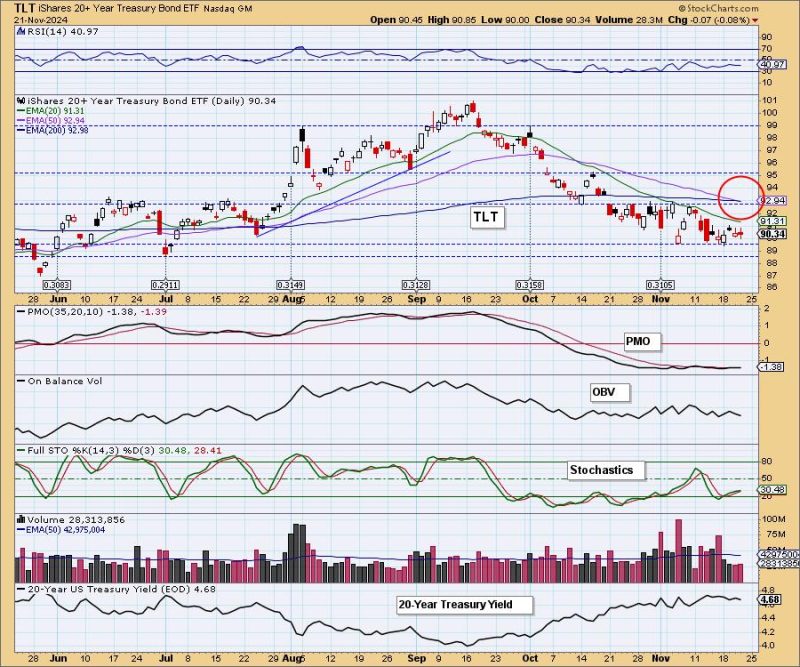In the world of investing, technical analysis plays a crucial role in helping traders make informed decisions about when to buy or sell securities. One popular technical indicator that is closely watched by many investors is the death cross, which occurs when a short-term moving average crosses below a long-term moving average. Recently, this ominous indicator has been spotted on the charts of U.S. Treasury bonds, raising concerns among market participants.
The death cross signal observed on the U.S. Treasury bond market implies a bearish outlook for bond prices in the near term. The 50-day moving average on the 10-year Treasury yield recently dipped below the 200-day moving average, signaling a potential reversal in the trend. Investors and analysts often interpret this crossover as a sign that further downside potential may be in store for bond prices.
The bond market is highly sensitive to fluctuations in interest rates, inflation expectations, and overall market sentiment. The death cross signal on Treasury bonds comes at a time when market participants are closely monitoring economic data releases, inflation reports, and central bank policies for clues on the future direction of interest rates. Rising inflationary pressures and expectations of tighter monetary policy from the Federal Reserve have contributed to the recent downward pressure on bond prices.
For investors holding bond positions, the death cross signal may serve as a warning to reassess their investment strategies and risk tolerance. Some investors may choose to reduce their exposure to long-dated bonds or shift their allocations towards other asset classes that could benefit from a rising rate environment. Bond traders and fund managers are likely to closely monitor key support levels and technical indicators to gauge the strength of the bearish momentum in the bond market.
While technical indicators like the death cross can provide valuable insights into market trends and potential reversals, it is important for investors to consider other fundamental factors and macroeconomic conditions that could influence bond prices in the long run. Market volatility, geopolitical events, and unexpected policy changes can all impact the fixed-income landscape and alter the trajectory of interest rates and bond yields.
In conclusion, the appearance of a death cross signal on U.S. Treasury bonds has sparked caution among investors and raised concerns about the future direction of bond prices. As market participants navigate through a complex and uncertain environment, staying informed about key technical signals and macroeconomic developments will be crucial for making sound investment decisions in the bond market.

